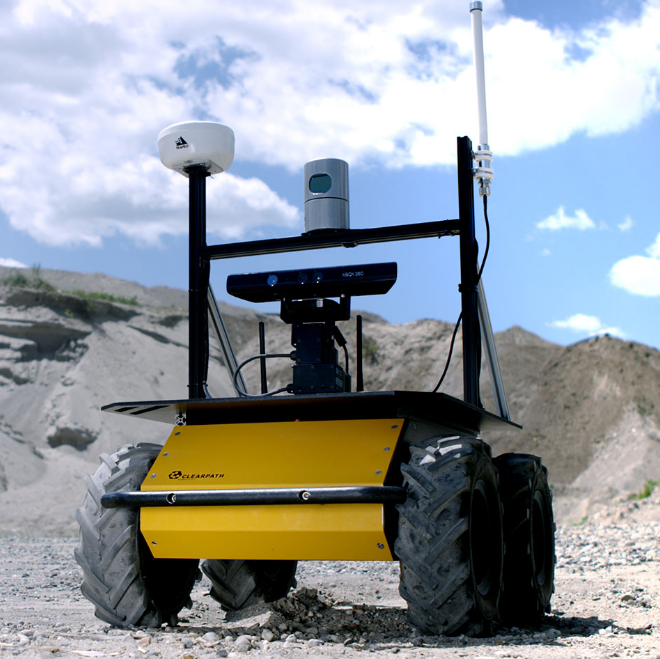代码流程比较复杂: Costmap2DROS::mapUpdateLoop —— Costmap2DROS::updateMap() —— LayeredCostmap::updateMap—— 每一层的 updateBounds
mapUpdateLoop 1 2 3 4 5 6 7 8 9 10 11 12 13 14 15 16 17 18 19 20 21 22 23 24 25 26 27 28 29 30 31 32 33 34 35 36 37 38 void Costmap2DROS::mapUpdateLoop (double frequency) if (frequency == 0.0 ) return ; ros::NodeHandle nh; ros::Rate r (frequency) ; while (nh.ok () && !map_update_thread_shutdown_) { struct timeval start , end ; double start_t , end_t , t_diff; gettimeofday (&start, NULL ); updateMap (); gettimeofday (&end, NULL ); start_t = start.tv_sec + double 1e6 ; end_t = end.tv_sec + double 1e6 ; t_diff = end_t - start_t ; ROS_DEBUG ("Map update time: %.9f" , t_diff); if (publish_cycle.toSec () > 0 && layered_costmap_->isInitialized ()) { unsigned int x0, y0, xn, yn; layered_costmap_->getBounds (&x0, &xn, &y0, &yn); publisher_->updateBounds (x0, xn, y0, yn); ros::Time now = ros::Time::now (); if (last_publish_ + publish_cycle < now) { publisher_->publishCostmap (); last_publish_ = now; } } r.sleep (); if (r.cycleTime () > ros::Duration (1 / frequency)) ROS_WARN ("Map update loop missed its desired rate of %.4fHz... the loop actually took %.4f seconds" , frequency, r.cycleTime ().toSec ()); } }
updateMap 1 2 3 4 5 6 7 8 9 10 11 12 13 14 15 16 17 18 19 20 21 22 23 24 25 26 27 28 29 30 void Costmap2DROS::updateMap () if (!stop_updates_) { tf::Stamped < tf::Pose > pose; if (getRobotPose (pose)) { double x = pose.getOrigin ().x (), y = pose.getOrigin ().y (), yaw = tf::getYaw (pose.getRotation ()); layered_costmap_->updateMap (x, y, yaw); geometry_msgs::PolygonStamped footprint; footprint.header.frame_id = global_frame_; footprint.header.stamp = ros::Time::now (); transformFootprint (x, y, yaw, padded_footprint_, footprint); footprint_pub_.publish (footprint); initialized_ = true ; } } }
1 2 3 4 5 6 7 8 9 10 11 12 13 14 15 16 bool Costmap2DROS::getRobotPose (tf::Stamped<tf::Pose>& global_pose) const robot_pose.frame_id_ = robot_base_frame_; try { tf_.transformPose (global_frame_, robot_pose, global_pose); } return true ; }
这里就只看障碍层的updateBounds函数。这个函数主要完成 clearing, marking以及确定bound。和静态地图类似,同样也是先判断是否是rolling地图,若是则更新地图原点。
const pcl::PointCloud<pcl::PointXYZ>& cloud = *(obs.cloud_); 点云z坐标在计算sq_dist之后就不处理了。
1 2 3 4 5 6 7 8 9 10 11 12 13 14 15 16 17 18 19 20 21 22 23 24 25 26 27 void ObstacleLayer::updateBounds (double robot_x, double robot_y, double robot_yaw, double * min_x, double * min_y, double * max_x, double * max_y) if (rolling_window_) updateOrigin (robot_x - getSizeInMetersX () / 2 , robot_y - getSizeInMetersY () / 2 ); if (!enabled_) return ; useExtraBounds (min_x, min_y, max_x, max_y); bool current = true ; std::vector<Observation> observations, clearing_observations; current = current && getMarkingObservations (observations); current = current && getClearingObservations (clearing_observations); current_ = current; for (unsigned int i = 0 ; i < clearing_observations.size (); ++i) { raytraceFreespace (clearing_observations[i], min_x, min_y, max_x, max_y); }
清除和添加障碍在后面的文章继续

